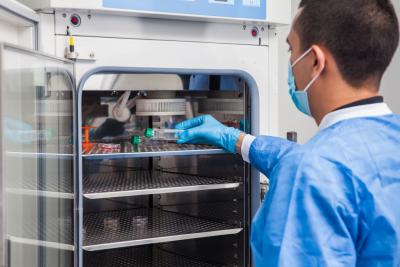7 Things to Consider When Purchasing an Ultra-Low Freezer
Understanding the Different Types of Ultra-Low Temperature (ULT) Freezers: A Comprehensive Guide
In the fast-paced world of laboratory science, precision and reliability are non-negotiable. Ultra-low temperature (ULT) freezers are critical for preserving high-value biological materials, reagents, and research samples. Choosing the right ULT freezer involves more than just comparing price tags—it requires aligning the unit’s performance, size, and features with your lab’s specific needs.
In this guide, we’ll walk through the most common types of ULT freezers and key considerations when selecting the best model for your facility.
???? Types of Ultra-Low Freezers
1. Benchtop/Undercounter ULT Freezers
Compact and versatile, benchtop or undercounter ULT freezers are designed for labs with limited space or small-capacity needs. These models are ideal for storing smaller sample volumes and are convenient for researchers who need frequent access without disrupting sample temperature stability.
2. Upright ULT Freezers
The most common type in research facilities, upright ULT freezers provide ample storage and easy accessibility. Adjustable shelves accommodate a range of sample containers. While slightly less energy-efficient than chest models—due to vertical doors allowing cold air to escape—uprights are ideal for frequent access and limited floor space.
3. Chest ULT Freezers
Chest-style models are known for their energy efficiency and longevity. Because cold air stays contained when the lid is opened, chest freezers maintain internal temperatures more effectively. They’re excellent for long-term storage but require more floor space and can be less convenient for sample access.
4. Walk-In ULT Freezer Rooms
Walk-in ULT freezers are rare but essential for facilities with extensive cold storage needs. While costly and complex to install, they offer long-term savings in energy, maintenance, and space when compared to running multiple smaller freezers. However, due to safety concerns and operational complexity, walk-in models are typically reserved for specialized use.
⚙️ Key Factors to Consider When Purchasing a ULT Freezer
1. Size & Capacity
Determine how much storage you need based on your current and projected sample volume. Upright and chest freezers vary in cubic capacity—larger units offer more room but require adequate ventilation and lab space.
2. Reliability
Your freezer’s reliability directly impacts your research. Look for models with strong service records and trusted brands like Thermo Fisher, PHCbi, or American Biotech Supply. Work with experienced distributors who can provide insight into performance, service plans, and equipment longevity.
3. Electrical Requirements
Freezers vary in voltage needs. Larger units may require 208–230V outlets. It’s essential to confirm that your facility has the correct infrastructure to support the unit to avoid power issues and equipment damage.
4. Noise Levels
Some ULT freezers can produce noticeable noise levels due to powerful compressors and fans. If noise is a concern in your workspace, look for models with low-decibel ratings (many newer units operate below 40 dB).
5. User Interface & Remote Monitoring
Modern ULT freezers often include touchscreen interfaces, alarm systems, and remote monitoring capabilities. These features enhance usability and allow for real-time temperature tracking, providing peace of mind when storing critical samples.
6. Energy Efficiency & Sustainability
Energy usage is a growing concern for labs. ENERGY STAR–certified models use eco-friendly refrigerants and high-efficiency compressors to reduce daily power consumption—some units use up to 40% less energy than older models.
7. Warranty Coverage
Always check the warranty details. Leading manufacturers often offer 2–3 years of coverage on parts and labor, with optional extended warranties. These plans can offer long-term cost savings and faster service support.
???? Choosing the Right ULT Freezer with Scientific Calibration
With over 25 years of experience supporting scientific research, Scientific Calibration offers a wide range of ULT freezer solutions tailored to your lab’s exact needs. From compact benchtop units to walk-in installations, we help you make informed, confident purchasing decisions—with support that extends well beyond the sale.
Looking for expert guidance or a custom quote? Contact our team today and discover why labs across America trust Scientific Calibration for reliable cold storage and top-tier service.








